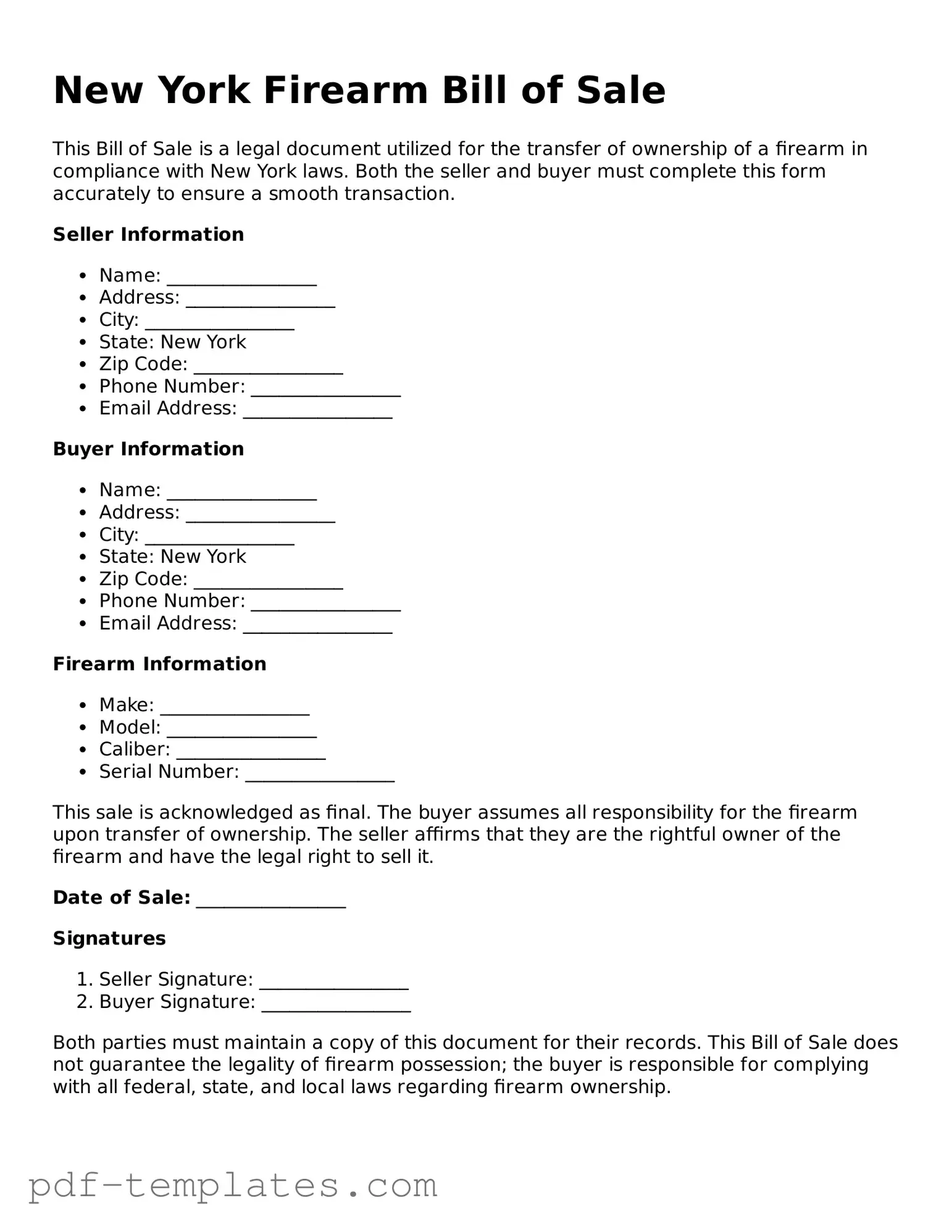The New York Firearm Bill of Sale form shares similarities with a Vehicle Bill of Sale. Both documents serve as proof of transfer of ownership. When someone buys or sells a vehicle, this form outlines the details of the transaction, including the buyer's and seller's information, the vehicle's description, and the sale price. Just like the firearm bill of sale, it helps protect both parties by documenting the exchange and ensuring that the buyer has legal ownership of the vehicle after the sale is complete.
In California, understanding legal documents like the Medical Power of Attorney form is crucial for ensuring that your healthcare wishes are honored when you are unable to communicate them. Just like the various bills of sale and agreements that establish ownership and responsibilities in different transactions, the Medical Power of Attorney lays out who will make those important healthcare decisions on your behalf. For comprehensive resources, you can find All California Forms that guide you through these essential legal documents.
Another document that resembles the Firearm Bill of Sale is the Boat Bill of Sale. This form is used when a boat is sold from one party to another. Similar to the firearm bill, it includes essential details such as the buyer and seller's names, the boat's specifications, and the purchase price. Both documents help clarify ownership and can serve as legal proof if disputes arise in the future.
The Personal Property Bill of Sale is also akin to the Firearm Bill of Sale. This document is used for various items, from furniture to electronics. It outlines the transaction details, including a description of the item, the sale price, and the parties involved. Both forms protect buyers and sellers by providing a written record of the transaction, ensuring that the buyer has legal ownership of the item after the sale.
In addition, the Equipment Bill of Sale is similar in function and purpose. This form is used when selling or purchasing equipment, often in a business context. Like the firearm bill of sale, it details the buyer and seller's information, the equipment's description, and the sale price. Both documents serve to confirm the transfer of ownership and can be important for tax purposes or future sales.
The Real Estate Purchase Agreement also shares characteristics with the Firearm Bill of Sale. While it pertains to real property rather than firearms, it serves a similar purpose by documenting the transfer of ownership. This agreement includes details about the property, the parties involved, and the terms of the sale. Both documents aim to protect the interests of both parties and provide a clear record of the transaction.
The Lease Agreement can be compared to the Firearm Bill of Sale in terms of its legal implications. While a lease does not transfer ownership, it outlines the terms under which one party can use another's property. Both documents require clear identification of the parties involved and specific terms. They provide a legal framework that helps protect the rights of both the lessor and lessee, similar to how a bill of sale protects buyers and sellers.
The Warranty Deed is another document that bears similarities to the Firearm Bill of Sale. A warranty deed is used in real estate transactions to guarantee that the seller has the right to sell the property and that the property is free of any claims. Both documents serve to establish ownership and provide assurance to the buyer. They create a legal record that can be referenced in case of disputes.
Finally, the Affidavit of Ownership is similar in that it can serve as proof of ownership for various types of property, including firearms. This document is often used when a person cannot provide a traditional bill of sale. It includes statements made under oath regarding the ownership of the property. Like the firearm bill of sale, it establishes a legal claim to ownership and can be important in resolving disputes.
